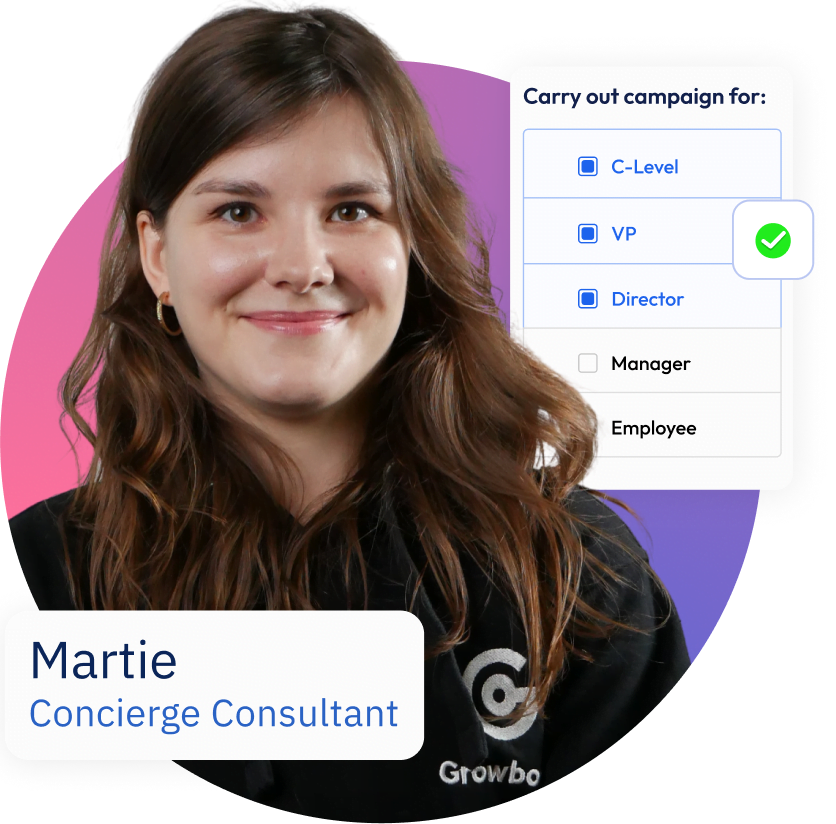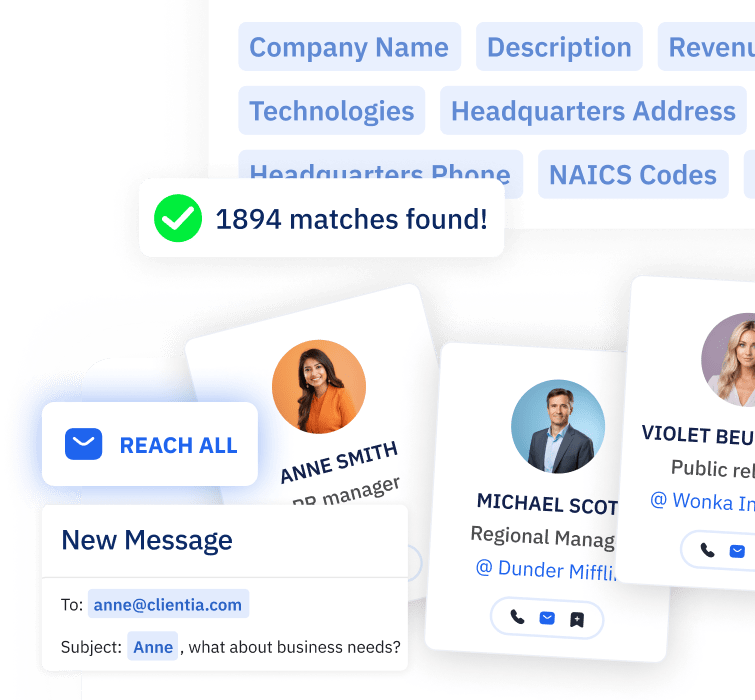Pitch decks are a tool to help make your sales calls more effective.
A deck can tell a story, illustrate key points, provide social proof, and display impressive data.
If you’ve been having a hard time closing deals on recent sales calls, you may need to rework your pitch deck for more visual impact.
Here’s our step-by-step process for making a successful sales deck — plus tools and examples to make it easy!
Discover how you can enhance your sales strategy and draw the audience’s attention with reliable and proven sales deck templates.
Tired of reading? Watch the video instead

What is a Pitch Deck or Sales Deck?
A pitch deck is not your entire sales meeting. Rather, it’s a supplement to your conversation — a visual aid, not something to read verbatim.
Why Use a Sales Deck
After we’ve determined “what is a sales deck”, let’s consider some of the main factors why you should use a sales pitch deck if you want to add your business name to success stories.
People perceive the visual type of information better than any other.
That’s why to drive the adoption of the product or service, sales reps should work with visuals to create an image and get the perception needed.
The narrative structure of the sales slide deck touches on customers’ pain points and values, as well as provides the audience with a call to action.
The better story and visual you can offer, the higher your chances to hit the target.
When Do You Need to Use a Sales Deck?
During the sales process stage when talking to your prospective clients. Great sales decks engage, provide interesting information, and emphasize the speech by serving as a companion for sales reps.
Use your sales pitch deck when:
- Searching for new clients
- Having the first meetings
- Holding a sales presentation
Why Sales Decks are Important
As mentioned, people perceive visual information better.
About 90% of what we learn is based on the things we capture with our eyes.
Thus, if you or your sales team aim to drive some product or service adoption, having a winning sales deck is a significant benefit!
You can have a top marketing or design team or come up with an excellent idea, but if your sales deck outline is poor, you won’t get the desired result.
The information you share verbally must be highlighted with quality visual content and reasonable arguments to be well-perceived and reveal a value proposition.
That’s why creating a sales pitch desk is so important for any sales presentation no matter if it’s a small business or a large company.
Ensure you create a conversation with the best sales pitch deck to draw attention, hit pain points, and call to action.
These factors are crucial during your sales presentations.
What Should a Sales Deck Include?
There’s no one set way to make a sales deck. You can choose any format or structure that makes sense for you and your prospect. Also, you can look at some sales deck examples to get inspired. At its core, any slide deck typically includes:
- Opening or cover slide
- Overview of meeting agenda
- Background on you or your company
- Discussion of problems and pain points faced by the prospect
- Solutions you or your company can provide
- Social proof, examples, and data to back up the pitch
- Benefits of working with you or your company
- Presentation wrap-up and next steps
- Pricing and FAQs slides
The way you present this information may vary based on the prospect’s industry and role. A top executive may want to see different data points than a mid-level manager, for instance.
How to Make a Sales Deck in 6 Easy Steps
Start by building out the base narrative you’d like to convey in your presentation, and create slides that support this narrative visually. You may wish to include a mix of images, charts, graphs, and text. Keep the pitch deck’s slides light on text and heavy on graphics, though — it’ll be much easier for your prospect to process the information this way on a sales call.
1. Plan Your Narrative
Your deck’s narrative should center around two main points:
1. What is the prospect’s main pain point?
2. How can you solve it?
It may sound harsh, but prospects don’t care about your product. They care about what it can do for them. Keep that in mind when building your deck.
Your pitch deck’s slides should support this narrative, positioning the problems and solutions from their viewpoint.
Sales Hacker makes a great point about modifying your slide deck’s supporting details based on your prospect’s role and their company size:
- For C-level prospects, approach the problem from a high, broad level. Here you can focus on long-term strategic growth opportunities, including how you can increase revenue, yet decrease costs. Use your story to show how you can overcome big obstacles for them.
- When talking to financial decision makers, emphasise how your solution can improve ROI and decrease the idea of any risk. Share costs, competitor comparisons, and social proof to back this up.
- If you’re talking to managers, remember their pain points are predictability and control, so ensure your arguments can guarantee these. For individual contributors, you can use another approach, focusing on how your solutions will improve their day-to-day operations and efficiency. This is a great chance to pair your pitch deck with a product demo.
It’s best practice to have different variations of your pitch deck for different “personas” you’ll be pitching to.
If you’re not sure how to approach the pitch deck for a new prospect, look back at your experiences with prior leads.
Identify past pitches to prospects in a similar role or industry — what resonated well with them? What missed the mark?
Depending on your relationship with current clients, you may want to talk to a few of them for ideas about what they’d like to see if you were to pitch them today.
These things are essential to consider if you want to create a winning sales deck.
Seek, pick, and reach
Connect with your potential customers
- 180m+ contacts
- Advanced filtering
- Multichannel sequences
- CRM integrations
2. Gather Elements
Think about how you can present important data points visually in your sales pitch decks.
You could include photos, charts, graphs, flowcharts, and infographics.
If including social proof or testimonials from a similar client, grab that person’s photo or logo to increase how trustworthy the content feels.
By customizing your decks to match a prospect’s brand, you can use prepared elements in a way that feels fresh and makes a strong visual impact.
Modifying your graphics to use a prospect’s brand colors is a simple way to do this. Canva and Adobe Color offer free tools to help you make a color palette from an image — upload your prospect’s logo or a screenshot of their website to get colors for your presentation.

3. Build Your Deck
Make your pitch deck in slide format using a program like PowerPoint, Keynote, Google Slides, Canva, or Paste.
You don’t need to be a graphic design master, either — there are lots of great templates available to help you create attractive decks in just a few clicks.
- Canva has pre-made slide decks, graphics, and charts you can customize right in your browser.
- The Slidesgo library is full of free deck templates for PowerPoint and Google Slides. You can search by industry, color, or type and customize from there.
- Creative Market is a great source to buy slide decks designed by professional graphic designers. Most decks are $30 or less, and you can use the template many times.
Keep your slides easy to read by keeping text over a contrasting background, and never placing text over a photo.
4. Don’t Make It Too Long
Best sales pitch decks have several common things, which makes them great. These are precise, accurate arguments and an optimal length.
Make sure your sales pitch deck includes no more than 10-11 slides and that each slide is informative enough to emphasize your points.
A great sales deck is a deck that can highlight your pitch while being easily perceived and interesting.
5. Avoid Common Mistakes
Even an excellent sales pitch deck template can be pointless if poorly used. Here are some rules you should follow:
- Include more imagery and less text.
- Use high-quality visuals only.
- Focus on the story, not the features.
- Determine and reveal three key benefits.
- The marketing team does customer research before the designer’s team starts creating a sales pitch deck.
6. Make Final Checks
Once complete your sales deck, ensure it meets the requirements to be well-perceived. There are several main criteria:
- It contains a quality cover slide. The first look means everything, so ensure a cover is great and engaging as it’s an introduction to the pitch deck.
- The story narrative has a logical structure, involves the prospect’s attention, and includes core arguments.
- It contains facts and references. Emphasise your points with statistics, infographics, studies, and research.
- It includes a call to action.
When making the final checks, take a look at top sales pitch deck examples and compare these to your own sales deck. It can help you to get inspired or make adjustments if something was missed.

Maciej Skoczyński
Account Executive Team Leader
Sales Deck Tips
Here are useful tips you can apply for the presentation to use your sales pitch deck better and achieve the desired impact.
The slide is a guide
The main thing to know is the sales pitch deck is a supplement to the narrative, not the story itself. Use the slide deck as a guide to start a conversation and highlight your points with informative visuals.
Send the sales deck before the presentation
The best presentation is when your prospects already have some information and are familiar with the subject matter. Send the sales deck before starting so that your audience can familiarize themselves with its contents. With such an approach, your presentation will be more effective and targeted.
Prepare the deck for prospects to read later
The presentation is only the first step. Final decisions are usually made later. That’s why you should create a deck your prospects can read later.
One of the reasons is that presentations are often attended by people who are not decision-makers but intermediaries. Therefore, make sure stakeholders can read your deck after the presentation is over.
leave no lead unexplored
Every potential client within reach
- 180m+ contacts
- CRM integrations
- 23 Prospect filters
- 15 Company filters
Get Inspired By Pitch Deck Examples
Still stumped about how to begin creating a pitch deck that packs a punch? Look at other companies’ decks for inspiration!
What Comes After the Sales Deck?
By ending your deck with a wrap-up and clear next steps, you can bring the sales meeting toward a natural close.
Your prospect may have some follow-up questions — while some leads sign on the dotted line after one call, many will want a bit more discussion.
Create a second version of your pitch deck that contains more written notes and offer to send it to them so they can share it with other stakeholders.
Don’t pressure your prospect to make a decision at that moment. Instead, agree on the follow-up with the prospect and put it on the calendar.
If your prospect declines to sign on as a client after your sales call, it’s not the end of the road. We can help you to determine the reason so you can fix it!
With a better understanding of the issue and the next steps you should take to handle that objection, your chances become higher. Keep lines of communication open.
When you use Growbots for prospecting, it’s easy to maintain communication with warm leads over time.
Curious how Growbots can work for you? Sign up for a demo and let us show you! You’ll meet with a dedicated strategy consultant who can show you the ropes — and if you decide to work with Growbots for your prospecting needs, they’ll be on hand every step of the way.

Maciej Skoczyński
Account Executive Team Leader
























